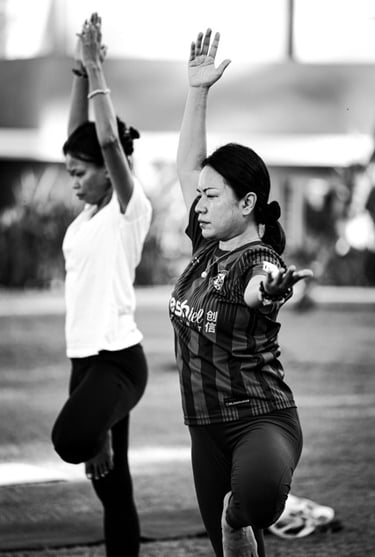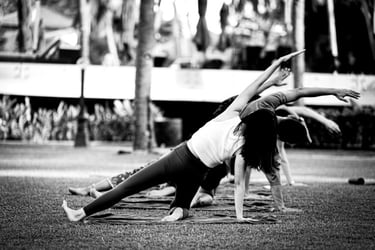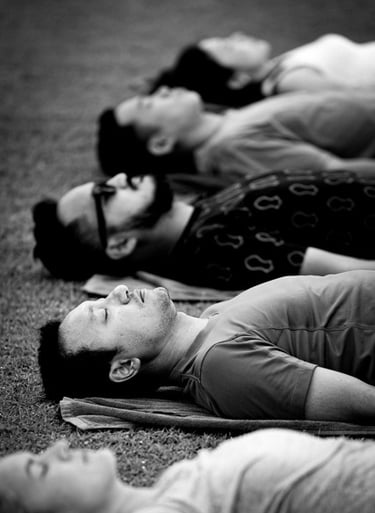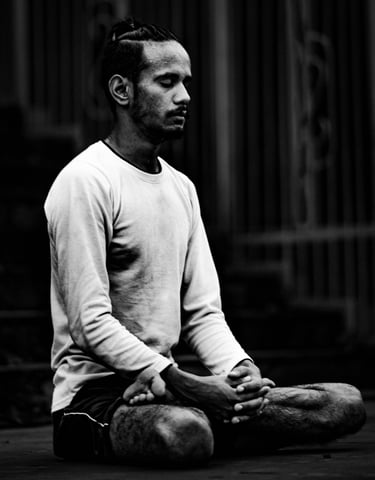Relaxation
Relaxation in yoga provides the perfect opportunity to release the stress and tension of daily life, allowing our bodies to soften and unwind. It helps us destress and fosters a sense of inner peace and calmness.
When we take the time to relax, we can slow down our breath and heart rate, and reconnect with the natural rhythm of our breath. This simple act can work wonders in quieting the mind.
To help us relax, the breath takes centre stage. We turn our awareness on our breathing, embracing its natural rhythm and flow. This awareness can be a powerful tool to anchor our mind in the present moment.








